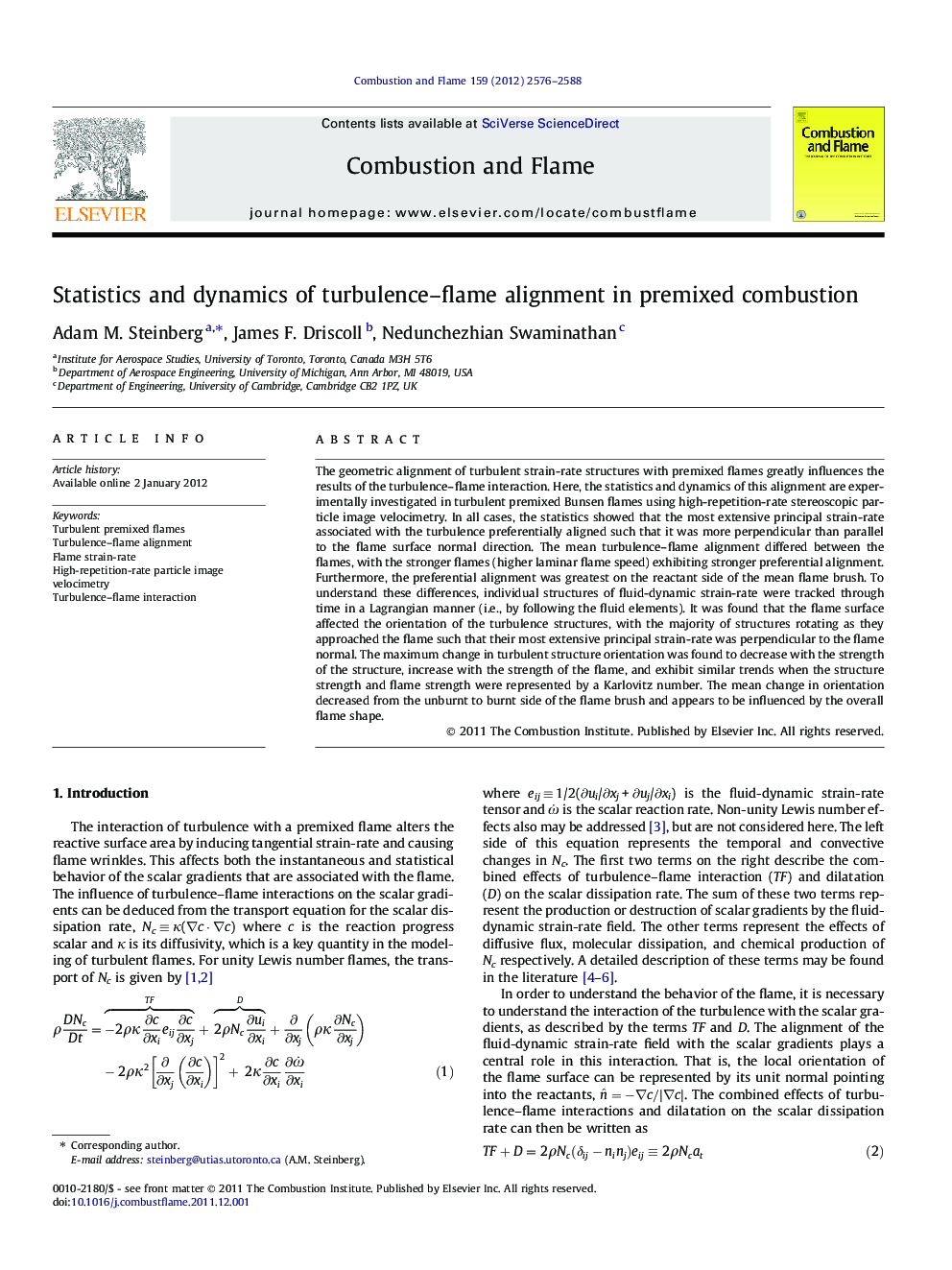| Article ID | Journal | Published Year | Pages | File Type |
|---|---|---|---|---|
| 169380 | Combustion and Flame | 2012 | 13 Pages |
The geometric alignment of turbulent strain-rate structures with premixed flames greatly influences the results of the turbulence–flame interaction. Here, the statistics and dynamics of this alignment are experimentally investigated in turbulent premixed Bunsen flames using high-repetition-rate stereoscopic particle image velocimetry. In all cases, the statistics showed that the most extensive principal strain-rate associated with the turbulence preferentially aligned such that it was more perpendicular than parallel to the flame surface normal direction. The mean turbulence–flame alignment differed between the flames, with the stronger flames (higher laminar flame speed) exhibiting stronger preferential alignment. Furthermore, the preferential alignment was greatest on the reactant side of the mean flame brush. To understand these differences, individual structures of fluid-dynamic strain-rate were tracked through time in a Lagrangian manner (i.e., by following the fluid elements). It was found that the flame surface affected the orientation of the turbulence structures, with the majority of structures rotating as they approached the flame such that their most extensive principal strain-rate was perpendicular to the flame normal. The maximum change in turbulent structure orientation was found to decrease with the strength of the structure, increase with the strength of the flame, and exhibit similar trends when the structure strength and flame strength were represented by a Karlovitz number. The mean change in orientation decreased from the unburnt to burnt side of the flame brush and appears to be influenced by the overall flame shape.
